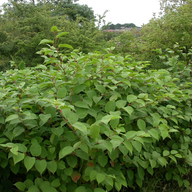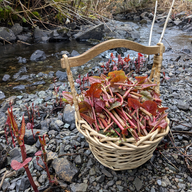Japanese Knotweed
- Shawn Dawson
- Jun 11
- 2 min read
Probably the most hated of all the “weeds” by gardeners and homeowners, Japanese knotweed is extremely invasive. As we know, from the way it is appearing along the sides of our rural roads and in the city, it can grow and spread very quickly.
A Plant with Many Names
This plant goes by many names, depending on the community in Newfoundland where you live. Among its many names are September Mist, Bamboo or "Newfie" bamboo, Donkey Rhubarb, and finally, its most fitting common name, “Mile-a minute” because you can actually watch it grow!
Get Even with the Weeds — Eat Them!
As I often say, the best way to get back at the weeds is to eat them! Japanese knotweed is no exception; it is actually considered a super-food. It has very high levels of vitamins, minerals and antioxidants.
How to Prepare Knotweed
Young knotweed shoots can be steamed or stir fried like asparagus, but I prefer to treat it like rhubarb, making it into chutneys, jams, and pickles. Here is one way to use it:
Harvest a few pounds of fresh knotweed shoots. Slice them as you would rhubarb, into thin chunks or your desired size. I like to make them very thin and add them to salads. Rinse well. Prepare a basic quick pickle brine of salt, sugar, vinegar, water and pickling spice. Pack jars with slices of knotweed, then fill jars to within half an inch of the top, with brine, fully covering slices. You can then refrigerate the pickled stems for later use, or preserve it by boiling jars in a water bath canner for ten minutes.
How to Harvest Knotweed
It is best to harvest knotweed when you first see the little pink shoots starting to poke up out of the soil. Once they emerge from the ground and reach the sunlight, they quickly turn green and hollow and lose their delicate texture.
Where to Find Knotweed
Knotweed can often be found in disturbed areas, including old gardens, along roadsides, beside rivers, and in ditches. It is important to keep in mind that Japanese knotweed should not be harvested in polluted or high traffic areas as the huge roots can take in a lot of contaminants. For example, do not harvest it in downtown St. John's where there could be high levels of lead in the soil. You should also be careful to not to take any part of the roots with you when harvesting to avoid accidentally planting it where you live. Only the new shoots should be harvested for food. One more caution — knotweed contains oxalic acid (like sorrel, spinach and rhubarb), so it should be avoided by people with kidney problems.
.png)













Comments